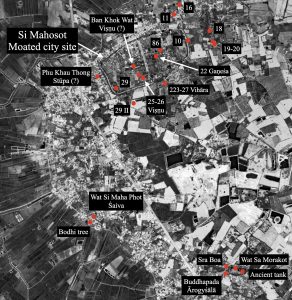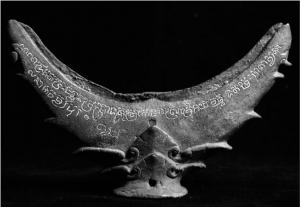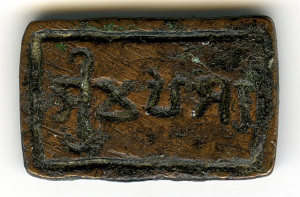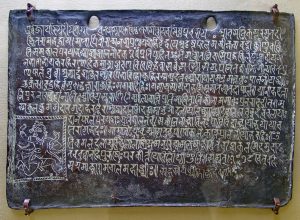Bronze mirror base (P.Ch.21) with an inscription (K.1053) in Old Khmer

Thailand (Prachinburi). Si Mahosot. Main historical and archaeological sites.
Prachinburi National Museum (Prachinburi). Finds from Si Mahosot (including mirror base P.Ch.21).

Bronze mirror base with inscription K.1053 (après ฐานข้อมูลจารึกในประเทศไทย)
IN01107 Inscription on a rectangular metal seal cast in a copper alloy

Inscription IN01107 on a rectangular metal seal cast in a copper alloy (note: image reversed).
OB03172e Laṅkātilaka Copper Plate 5
Lankatilaka Vihara, Udunuwara, Kandy District
OB03172d Laṅkātilaka Copper Plate 4
Lankatilaka Vihara, Udunuwara, Kandy District
OB03172c Laṅkātilaka Copper Plate 3
Lankatilaka Vihara, Udunuwara, Kandy District
OB03172b Laṅkātilaka Copper Plate 2
Lankatilaka Vihara, Udunuwara, Kandy District
OB03172a Laṅkātilaka Copper Plate 1
Lankatilaka Vihara, Udunuwara, Kandy District
OB03172 Laṅkātilaka Copper Plates
Lankatilaka Vihara, Udunuwara, Kandy District
IN03216 Laṅkātilaka Copper Plates
This set of four copper plates are preserved in the Laṅkātilaka Temple at Udunuwara in Kandy District. These plates are dated in the seventh year of Rājāhirājasiṁha, who reigned from 1781 until 1798. The fourth plate is inscribed with grants of lands to the temple from this monarch and his predecessor, Kīrtiśrī Rājasiṁha (r. 1747–1781). The first three plates, meanwhile, are engraved with copies of earlier grants to the temple made by kings Bhuvanaikabāhu IV and Vikramabāhu III in the fourteenth century. These grants were originally recorded on a rock to the south of the temple (IN03212 and IN03213). However, there are some discrepancies between the rock inscriptions and the texts engraved on these plates. It cannot simply be the case that the engravers of the copper-plates struggled to decipher the original inscriptions, since the discrepancies affect portions of the text which remain clearly legible on the rock. Certain discrepancies appear to be the result of the eighteenth-century scribes having adapted the fourteenth-century text to match their notions of propriety and to magnify the part of Senā-Laṁkādhikāra in the grant to the temple. Furthermore, Senarath Paranavitana conjectures that the copper plates were not based directly on the rock inscriptions but were instead copied from earlier copper-plate charters, which contained variant versions of the texts. It certainly seems to have been the case that the grants proclaimed in the rock inscriptions were also recorded on copper plates, since the inscription of Bhuvanaikabāhu declares as much.
Pipaladā copper plate charter of Bhoja dated VS 1077 and VS 1078

Pipaladā (Indore Tahsil, Indore District, Madhya Pradesh). Copper plate charter of Bhoja. Indore, State Museum.

